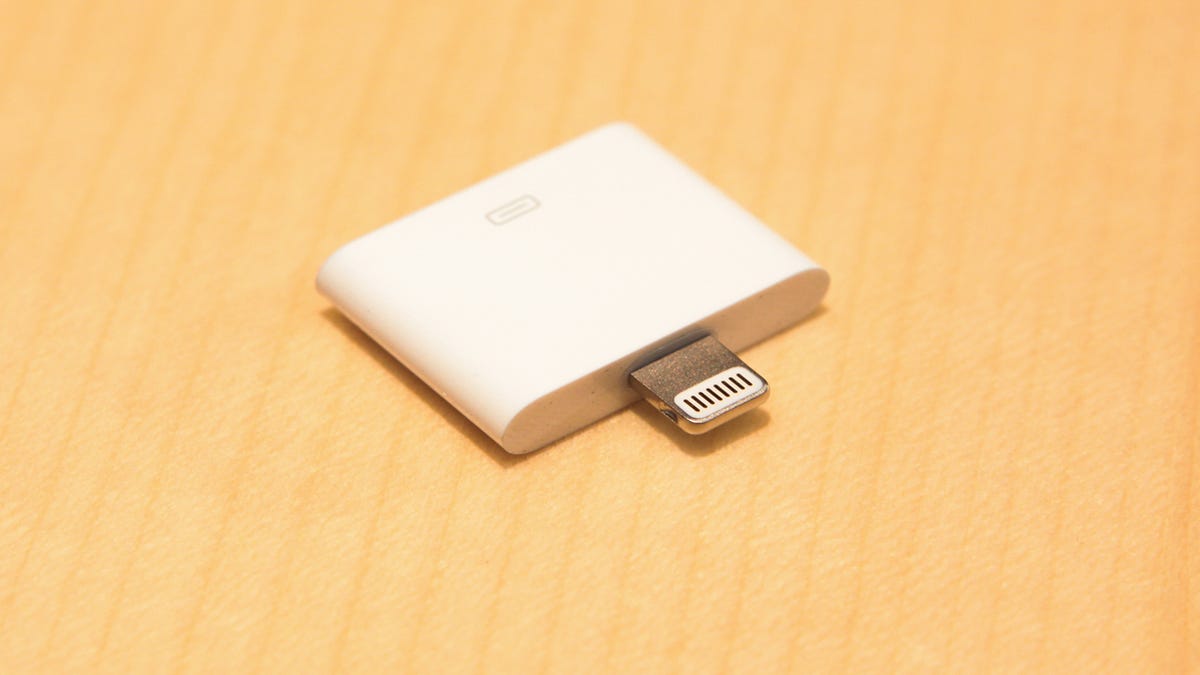What is the new Lightning connector? Unveiled at the press conference announcing the iPhone 5 and 2012 iPod lineup, the proprietary Lightning connector replaces the 30-pin connector found on the iPhone, iPad, and iPod since 2003. Like the 30-pin connector, the Lightning connector is used for charging the device as well as syncing content and data and audio and video output. The new devices come with a USB 2.0-to-Lightning cable.
How is it different from the 30-pin connector? It’s 80 percent smaller yet sturdier, and it’s reversible, so you don’t have to worry about which side is the top or bottom when you connect. Apple also says it’s an all-digital, eight-signal design that adapts to what the signals need to be for the accessory you’re connected to.
Which products will it be used on? The Lightning connector is used for the iPhone 5, the fifth-generation iPod touch, and seventh-generation iPod Nano. Since it is part of Apple’s port/connector strategy alongside Thunderbolt, it will be the connector for iOS products for the foreseeable future, so expect to see it on the fourth-generation iPad and other future devices.


James Martin/CNET
Does this mean I can’t use any of my old charging and docking accessories with the new iPhone and iPods? You will not be able to connect directly to anything that uses a 30-pin connector. However, adapters are available that convert a 30-pin connector to a Lightning connector. With the adapter you get support for analog audio output, USB audio, as well as syncing and charging. (According to Macworld, there is a digital-to-analog converter (DAC) in the adapter.)
The adapter does not support video output and not all 30-pin devices will be supported, either, so you may still need buy new accessories to use with the iPhone 5 and 2012 iPods. Another feature, iPod Out, which gives certain devices such as car stereos iPod-like navigation of your music collection is also not supported. The adapter is fairly large as well, so any accessories that fit around the device likely won’t work.
Related stories:
- Apple iPhone 5 full review
- Apple’s dock connector change is awful, don’t kid yourselves
- Unboxing the iPhone 5 (video)
What sort of adapters will be available, and how much will they cost? A 30-pin connector to-Lightning adapter is available from Apple for $29. Also available is a $39 7.8-inch cable with a Lightning connector at one end and 30-pin connector port at the other. Lightning to USB 2.0 cables will cost $19.
Apple will also sell HDMI and VGA adapters for Lightning. A Micro-USB to Lightning adapter will be made available in Europe. And you can of course expect a full assortment of third-party adapters to be available, too.


Now playing:
Watch this:
Apple shows redesigned iPhone 5 connector
2:28
Are there any future-proof accessories I can buy to keep this from happening again? There are always going to be accessories that require using the connector and nothing is ever going to be 100 percent future-proof. However, as Apple Senior Vice President Phil Schiller pointed out when presenting Lightning, a lot of what we do now is wireless. Whenever possible, take advantage of accessories that use Bluetooth or Apple’s AirPlay. Keep in mind, too, the 30-pin connector was around for nearly a decade, so chances are good you’ll be safe for the next several years with Lightning accessories.



